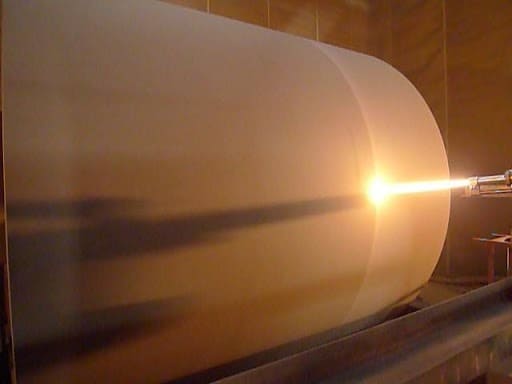What Affects Ceramic Coating Hardness? 5 Critical Factors
Overview
Ceramic coatings are vital for enhancing the durability and performance of components in industries like aerospace, automotive, and manufacturing, where hardness directly impacts wear resistance and longevity. Hardness, often measured in Vickers (HV) or Mohs scales, determines a coating’s ability to withstand abrasion, erosion, and mechanical stress. However, achieving optimal hardness depends on several critical factors, including material composition, deposition methods, and environmental conditions. This blog examines five key factors influencing ceramic coating hardness in 2025, providing insights for industries seeking robust, long-lasting solutions.
At Advanced Ceramics Hub, we specialize in high-quality ceramic products, ensuring optimal performance for industrial and scientific applications.

1、Key Materials and Additives in Ceramic Coatings
The hardness of ceramic coatings is fundamentally tied to their material composition, as different ceramics exhibit varying intrinsic hardness levels. Materials like Aluminum Oxide (Al2O3), Zirconia (ZrO2), Silicon Carbide (SiC), Titanium Nitride (TiN), and Silicon Nitride (Si3N4) are commonly used, each offering unique hardness properties. Additives, such as yttria in ZrO2, stabilize crystal structures, enhancing hardness, while material purity minimizes defects that reduce hardness. Selecting the right material based on application needs (e.g., high wear resistance for cutting tools) is critical for optimizing coating performance.
Material Comparison:
| Material | Hardness (HV) | Max Temp (°C) | Corrosion Resistance | Cost | Application |
| Al2O3 | 1800–2000 | 1600–1800 | Moderate | Low | General industrial coatings |
| ZrO2 | 1200–1400 | 2400 | High | Moderate | Thermal barrier coatings |
| SiC | 2400–2800 | 1400–1600 | Very High | High | Abrasive environments |
| TiN | 2000–2500 | 600–800 | Moderate | High | Cutting tools |
| Si3N4 | 1500–1800 | 1200–1400 | High | High | High-stress components |
Looking for premium ceramic products? Explore Advanced Ceramics Hub’s selection.
How to Choose the Right Material for Ceramic Coatings?
Choosing the right material for ceramic coatings is crucial to ensure optimal performance in various applications. The ideal material depends on factors such as hardness, wear resistance, thermal stability, and corrosion resistance. Understanding the unique properties of each material can help you make an informed decision for your specific needs.
| Material | Chemical Formula | Hardness (HV) | Advantages | Typical Applications |
| Aluminum Oxide | Al₂O₃ | 1,200 – 1,500 | High hardness, excellent wear resistance, good thermal stability | Abrasive environments, wear-resistant coatings |
| Zirconium Dioxide | ZrO₂ | 1,100 – 1,200 | Extremely hard, high thermal conductivity, wear, and corrosion resistance | High-temperature, toughness-required applications |
| Silicon Carbide | SiC | 2,500 – 3,000 | Extremely hard, high thermal conductivity, wear and corrosion resistance | High-stress, high-temperature environments |
| Titanium Dioxide | TiO₂ | 1,000 – 1,200 | Excellent corrosion resistance, high refractive index, good wear resistance | Chemical exposure applications, protective coatings |
| Yttrium Oxide | Y₂O₃ | 1,000 – 1,200 | Stabilizes zirconia coatings, improves hardness and toughness | Additive to enhance zirconia coatings |
| Chromium Oxide | Cr₂O₃ | 1,400 – 1,600 | Excellent wear resistance, corrosion protection | High-stress mechanical, industrial applications |
| Magnesium Oxide | MgO | 1,500 – 2,000 | Good thermal stability, electrical insulation properties | High-temperature insulation, electrical insulation coatings |
| Additives (e.g., Yttria, Magnesia) | – | – | Enhances hardness, stabilizes crystal structure | Enhances coatings, increases toughness and hardness |
Request a custom quote for ceramic products.
2、Key Ceramic Coating Deposition Methods and Their Impact on Hardness
The method used to apply ceramic coatings significantly affects their hardness by influencing microstructure, density, and adhesion. Common techniques include Plasma Spraying, Physical Vapor Deposition (PVD), and Chemical Vapor Deposition (CVD). PVD and CVD produce dense, uniform coatings with higher hardness (e.g., TiN at 2000–2500 HV via PVD), while Plasma Spraying may result in slightly lower hardness due to porosity. Deposition parameters like temperature, pressure, and gas flow must be optimized to maximize hardness and coating quality.
Plasma Spraying:
- Plasma spraying is a high-speed, cost-effective process for applying ceramic coatings. However, it can lead to porosity, which reduces the overall hardness of the coating.
- Example: Aluminum oxide (Al₂O₃) coatings produced by plasma spraying typically achieve hardness values between 1600–1800 HV, but the porosity present in the coating can affect its durability in high-stress applications.
- Advantages: Fast application, suitable for large surface areas, cost-efficient for industrial applications.
PVD (Physical Vapor Deposition):
- PVD produces dense, uniform coatings that offer higher hardness and better wear resistance. This method involves evaporating the coating material in a vacuum, followed by its condensation onto the substrate.
- Example: Titanium Nitride (TiN) coatings applied through PVD achieve hardness levels between 2000–2500 HV, making it ideal for cutting tools and high-wear environments.
- Advantages: High coating uniformity, high hardness, excellent wear resistance, and corrosion protection.
CVD (Chemical Vapor Deposition):
- CVD is used to deposit high-purity coatings with superior uniformity. It involves chemical reactions that occur in a gaseous phase to produce the coating material, resulting in very dense, hard coatings.
- Example: Silicon carbide (SiC) coatings produced via CVD can reach hardness values between 2400–2800 HV, making them suitable for extreme wear and high-temperature applications.
- Advantages: High-purity coatings, excellent hardness, and uniformity, ideal for high-performance environments.
The hardness and quality of ceramic coatings can be further enhanced by optimizing deposition parameters such as temperature, pressure, and gas flow. Precise control of these factors ensures uniform coating thickness and enhances overall performance, reducing the risk of defects and inconsistencies in the coating’s properties.
3、Optimal Ceramic Coating Thickness for Enhanced Hardness
Coating thickness is a critical factor that directly influences the hardness and durability of ceramic coatings. Ceramic coatings are designed to protect surfaces from wear and tear, and their thickness plays a significant role in enhancing mechanical properties. Thicker coatings, ranging from 50 to 100 µm, generally provide increased hardness by offering greater resistance to mechanical stress and abrasion. However, excessive thickness may lead to the formation of internal stresses, resulting in cracking or delamination, which compromises the coating’s integrity and performance.
An optimal coating thickness range of 10–50 µm is commonly recommended for most industrial applications, as it strikes a balance between hardness and adhesion. The ideal thickness varies depending on the specific needs of the application and the type of material being coated. For example, precision tools typically require thinner coatings, ranging from 5 to 20 µm, to maintain sharpness and precision. On the other hand, heavy-duty machinery, such as turbines, benefits from thicker coatings, often ranging from 50 to 100 µm, to withstand higher levels of mechanical stress and environmental exposure.
A well-designed coating thickness ensures the durability of the ceramic coating without compromising its performance or the underlying substrate. As such, it’s crucial to select the appropriate coating thickness based on the intended use and operating conditions.
- Thicker coatings generally enhance hardness, but excessive thickness may cause cracking or delamination.
- Optimal thickness range: 10–50 µm for most industrial applications.
- Industry-specific thickness: 5–20 µm for precision cutting tools, 50–100 µm for heavy machinery, and turbines.
- Proper thickness design is essential for maximizing the coating’s protective properties and ensuring long-term durability.
| Thickness (µm) | Hardness Impact | Risk | Application |
| 5–20 | High hardness, strong adhesion | Low cracking risk | Cutting tools, precision parts |
| 20–50 | Optimal hardness, durability | Moderate risk | General machinery |
| 50–100 | Very high hardness | Cracking risk | Turbine blades, heavy equipment |
4、The Impact of Substrate Properties on Ceramic Coating Performance
The substrate material plays a crucial role in determining the performance of ceramic coatings, especially when it comes to hardness and durability. Materials such as steel, titanium, or carbide must be compatible with the ceramic coating to ensure proper adhesion and support the desired hardness. Factors like surface roughness (Ra 0.1–0.4 µm) and substrate hardness (>500 HV for steel) enhance the bonding between the substrate and coating, ensuring greater load-bearing capacity. Moreover, the preparation of the substrate, including cleaning and polishing, is essential to achieving optimal coating performance.
Compatible Substrates (e.g., steel, titanium) Support Coating Hardness
- The choice of substrate is essential for strong adhesion and maximum coating hardness.
- Steel, titanium, and carbide are commonly used for their structural integrity and ability to withstand high temperatures and mechanical stresses.
- These materials form a strong bond with ceramic coatings, enhancing hardness, wear resistance, and durability.
- Titanium alloys are favored for their lightweight and corrosion-resistant properties, providing an excellent surface for various industrial applications.
Surface Roughness (Ra 0.1–0.4 µm) Improves Adhesion and Hardness
- Surface roughness plays a key role in improving adhesion between the coating and the substrate.
- Optimal roughness (Ra 0.1–0.4 µm) allows better mechanical bonding, improving wear resistance and overall hardness.
- Smoother surfaces may not provide sufficient mechanical interlocking, while excessive roughness could cause defects in the coating.
- Proper surface preparation ensures uniform coating application, maximizing hardness and durability.
Substrate Hardness (>500 HV) Prevents Deformation Under Stress
- The substrate hardness is crucial for overall coating performance.
- Substrates with hardness greater than 500 HV (e.g., high-strength steel or titanium alloys) prevent deformation under stress, maintaining coating integrity in high-impact or high-stress environments.
- Harder substrates absorb mechanical loads without yielding or deforming, which extends the lifespan of the coating.
- This is especially important in industrial applications where the substrate experiences heavy wear and tear, ensuring the coating’s protective properties are maintained.
5、Environmental and Operational Conditions Affecting Ceramic Coating Hardness
Ceramic coatings, known for their superior wear resistance and durability, can experience degradation in their hardness over time due to environmental and operational conditions during use. These conditions, such as exposure to high temperatures, abrasive wear, and corrosive environments, significantly impact the coating’s ability to maintain its hardness and protective properties.
- High Temperatures (>1000°C): When exposed to extremely high temperatures, ceramic coatings can undergo thermal softening, which results in a reduction of hardness. Certain coatings may be more susceptible to this phenomenon, especially those not specifically designed for high-temperature environments. In such conditions, the material may lose its ability to resist wear and maintain structural integrity, leading to a diminished lifespan of the coating.
- Abrasive Wear and Corrosion: Over time, the harsh physical and chemical conditions of abrasive environments, along with exposure to corrosive substances like acidic gases or salts, erode the coating’s hardness. This wear and erosion can create a breakdown in the surface structure, allowing for easier penetration by mechanical forces or corrosion agents. As the coating’s protective layer weakens, the substrate underneath may become more vulnerable to damage.
- Thermal Cycling and Microcracking: Another significant issue is thermal cycling, where repeated heating and cooling cycles cause the coating to expand and contract. This can induce microcracks within the coating, further reducing its hardness and integrity. The presence of microcracks can allow for the ingress of corrosive elements, accelerating the degradation process.
To maintain the hardness and effectiveness of ceramic coatings in such environments, protective measures must be taken. For example, the application of secondary coatings or the use of controlled operating conditions (such as maintaining a stable temperature range) can help preserve the coating’s hardness. Additionally, choosing coatings designed for specific high-stress, high-temperature, or corrosive environments can mitigate the effects of these conditions and enhance the longevity of the coating.
The hardness of ceramic coatings, critical for industrial durability, is influenced by material composition, deposition method, coating thickness, substrate properties, and environmental conditions. By optimizing these factors—choosing materials like SiC for high hardness, using PVD for dense coatings, or preparing substrates properly—industries can achieve robust, long-lasting coatings. In 2025, understanding these factors ensures superior performance in aerospace, automotive, and manufacturing applications.
Looking for premium ceramic heaters? Contact us today!
